
Orthopedic Surgeon Paramus NJ
Orthopedic Surgeon Paramus NJ
For the third consecutive year, New York Sports Medicine Institute founder Neil S. Roth, MD has been recognized by New York Magazine as one of New York’s best Orthopedic Surgeon Paramus NJ. This prestigious list is determined by other doctors, and NYSMI takes pride in what is yet another acknowledgment of the high level of expertise that can be found at the New York Sports Medicine Institute.
New York Sports Medicine Institute – a comprehensive sports medicine practice providing orthopedic surgery, physical therapy, and concussion care – provides patients living or working in Westchester access to the region’s top sports medicine doctors and healthcare professionals in a single convenient White Plains location.
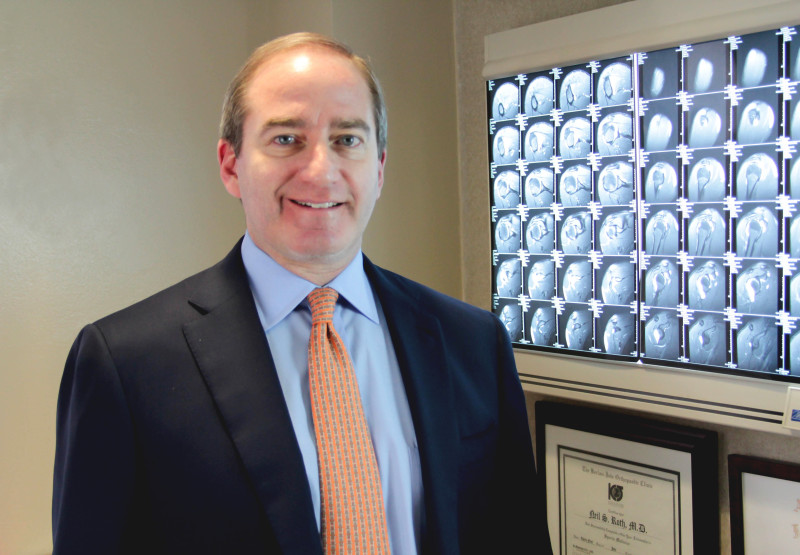
Dr. Roth is a board-certified orthopedic surgeon, specializing in sports medicine, shoulder, elbow and knee surgery. Dr. Roth completed his sports medicine fellowship training at the world-renowned Kerlan-Jobe Orthopedic Clinic in Los Angeles, and he served as an assistant team physician for the Los Angeles Lakers, Dodgers, Kings and Angels, the Anaheim Ducks and the University of Southern California. He has consulted on orthopedic issues with the New York Yankees and Oakland Athletics baseball clubs. Dr. Roth has been a member of the staff of the prestigious Lenox Hill orthopedic teaching hospital in New York City since 2003, and where he still practices. He is a highly skilled and experienced Orthopedic Surgeon Paramus NJ, Schedule your appointment today by filling out a form on our website.
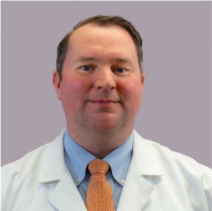
NICHOLAS DELANEY, MD – Local Orthopedic Surgeon Paramus NJ
Dr. Nicholas Delaney is a board-certified Orthopedic Surgeon concentrating on Sports Medicine and related injuries. A graduate of SUNY Upstate Medical School, Albany Medical Center for Residency and the prestigious Union Memorial Hospital Fellowship program in Baltimore Maryland, Dr. Delaney has built a reputation for providing excellent care to his patients in a compassionate, appropriate manner, putting the patient’s needs first.
Dr. Delaney’s current practice is focused on the treatment of athletic injuries, degenerative orthopedic conditions impacting mobility, and injuries sustained at the workplace (Worker’s Compensation) and Automobile accidents. He is completely focused on returning patients to normal movement using non-surgical, and when needed, surgical intervention. Dr. Delaney is licensed in New Jersey and New York and is board-certified with the ABOS.
Some examples of the kinds of injuries and conditions Dr. Delaney focuses on:
- Athletic injuries
- Muscle/Tendon tears
- Torn ligaments
- Torn meniscus
- Fractures
- Automotive Injuries
- Worker’s Compensation Injuries
Recent Blog Posts – From Our Orthopedic Surgeon in Paramus NJ
Common Orthopedic Procedures at NYSMI
At New York Sports Medicine Institute (NYSMI), our team of experienced orthopedic surgeons specializes in treating musculoskeletal conditions that impact your ability to move comfortably and perform daily activities. From conservative treatments to advanced surgical interventions, NYSMI is dedicated to restoring joint health and helping patients regain their quality of life.
Understanding Orthopedic Surgery
Orthopedic surgery involves diagnosing and treating injuries or diseases affecting the musculoskeletal system, which includes bones, joints, muscles, ligaments, and tendons. Orthopedic physicians may use minimally invasive techniques or traditional open surgery, depending on the severity and type of orthopedic condition being treated. Orthopedic surgeons often focus on alleviating pain, improving joint function, and enhancing overall mobility. Standard orthopedic procedures include joint replacements, fracture repairs, and ligament repairs.
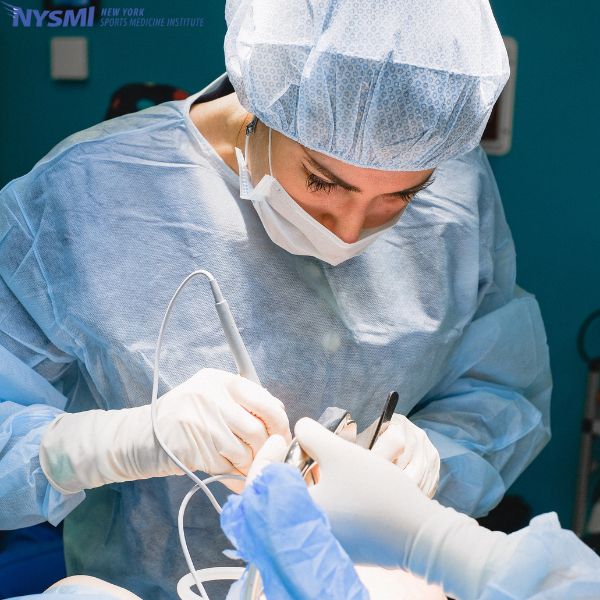
Types of Common Orthopedic Surgeries
The type of orthopedic surgery recommended depends on the specific injury or condition. Here are some of the most common types of orthopedic surgeries performed:
- Joint Replacement Surgeries: For joints severely damaged by arthritis or injury, joint replacement surgery involves replacing the damaged parts of a joint with metal or plastic implants. Knee replacement surgery and hip replacement surgery are among the most common replacement surgeries. In total knee replacement, metal and plastic parts are used to cap the ends of the knee joint, restoring function and relieving pain caused by arthritis. This type of surgery is particularly beneficial for older adults experiencing joint deterioration.
- Arthroscopy: This minimally invasive surgery is used to diagnose and treat joint conditions. During knee or shoulder arthroscopy, a surgeon inserts an arthroscope, a tiny camera, into the joint. This tool allows the surgeon to visualize the inside of the joint and make necessary repairs, often on an outpatient basis. Arthroscopic procedures are popular for treating the rotator cuff, torn ligaments, and small bone fractures.
- Spinal Fusion: For patients with chronic back pain, spinal fusion surgery may be recommended. This procedure involves joining two or more vertebrae in the spine to reduce motion and relieve pain. The recovery time varies, and some patients can go home the same day, depending on the type of spinal fusion performed.
- Fracture Repair and Bone Surgery: Repairing a fractured bone is a standard orthopedic procedure that may involve setting the bone in place with pins, screws, or plates. This approach helps the bone heal correctly and restores function. After surgery, patients may need to wear a cast or splint to support the bone during recovery.
- Ligament and Tendon Repairs: Injuries to tendons or ligaments, such as an anterior cruciate ligament (ACL) tear in the knee, are commonly treated through surgical repair. The surgeon may use tissue grafts to reconstruct damaged ligaments, allowing patients to regain joint stability and range of motion.
- Shoulder Replacement Surgery: For patients with severe shoulder joint damage, shoulder replacement surgery may be performed. The shoulder joint, a ball-and-socket joint, is replaced with metal or plastic parts that remain inside the body to restore mobility.
Benefits of Minimally Invasive Surgery
Minimally invasive surgeries, such as arthroscopy, are less painful and typically involve shorter recovery times than traditional open surgery. Because they use small incisions, they allow patients to go home the same day, often reducing overall recovery time. In procedures like knee arthroscopy or revision joint surgery, surgeons can address complex conditions with greater precision and reduced discomfort, enabling a quicker return to daily activities.
Getting Back to an Active Life
At NYSMI, our orthopedic surgeons are committed to helping you regain a pain-free, active life. We diagnose and treat musculoskeletal conditions, focusing on conservative treatment when possible and offering advanced surgical procedures when necessary. With a team of skilled healthcare providers, you’ll receive compassionate, expert care every step of the way.
If joint pain or musculoskeletal issues affect your lifestyle, contact NYSMI today to learn more about our comprehensive orthopedic treatments and take the first step toward a full recovery.
RECOVERING FROM HIP REPLACEMENT SURGERY
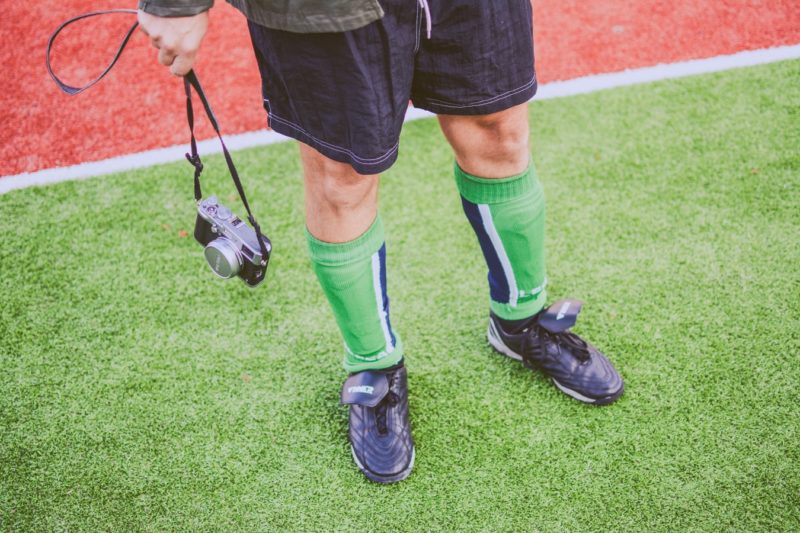
Hip replacement surgery is a procedure in which an orthopedist surgically removes a defective hip joint that has developed arthritis and replaces it with an artificial hip joint which is made of either metal or plastic. Hip replacement surgery is a last-resort option when all other non-invasive options such as physical therapy, pain management, and self-care have not worked. Once the hip joint has healed, patients report increased quality of life. At New York Sports Medicine Institute we are a team of orthopedists, physical therapists, a concussion specialist, and a Orthopedic Surgeon Paramus NJ and White Plains that can help you every step of the way of your hip replacement process.
Recovery after a hip operation:
Immediately after your hip replacement, you will be monitored by your team of doctors for several hours and either provided further treatment or released based on progress. You could feel some pain however we will provide you with medicine to reduce this. Anesthesia can cause breathing issues, which can cause mucus to accumulate in the lungs. Deep breathing and frequent coughing help to keep the lungs clean.
The typical post-hip replacement surgery hospitalization lasts one night, with some patients leaving the same day of surgery and others leaving days after.
Physical therapy & pain management:
Regular exercise to restore strength and flexibility in the hip joint is essential for a complete recovery. The goal is helping you return to your daily activities. This begins based on your overall bodily condition post-surgery. At New York Sports Medicine Institute, our team of orthopedists, physical therapists, and a Orthopedic Surgeon Paramus NJ will work to get you back to living your life pain-free.
Depending on your hip condition, a physiatrist may offer injections that can reduce pain and aid in overall healing. In conjunction with physical therapy, your Orthopedic Surgeon Paramus NJ can greatly help you during the post-surgical rehabilitation process.
Take care of your surgical wound:
You can typically remove the surgical bandage after five days. If you have sutures or pins, keep the area clean and dry until it is removed about two weeks after surgery. When bathing you must protect the area so that you do not get wet. Your surgical team will go over this process with you.
If there are signs of infection, contact your Orthopedic Surgeon Paramus NJ immediately. Signs of infection may include:
- Redness around the cut.
- Drainage issues at the incision.
- Flu-like symptoms.
How to reduce swelling and inflammation:
Circulation of the affected leg is slow after surgery, resulting in swelling of the calf and ankle. The swelling lasts on average 12 weeks but should decrease with each week. To reduce puffiness, we recommend resting your legs, knees above the heart, four to five times a day for 15 to 20 minutes each. Apply a cold compress to each painful or swollen area four to five times a day for at least 15-20 minutes.
Your physical therapist and physiatrist will help to reduce swelling and inflammation by prescribing the right treatment plan.
How to prevent blood clots:
Physical activity is the key to reducing the risk of a serious blood clot in your body. Walking, even over short distances, promotes circulation so as soon as you receive the go-ahead to begin walking, you should. Aim and bend your ankle repeatedly while sitting. Also, remember to take a prescription anticoagulant medication.
The symptoms of a blood clot include:
- Increase swelling of the affected leg, which does not decrease.
- Pain when touching the calf.
If you have any of these symptoms, contact our office immediately for further instructions!
Follow-Up Post Hip Replacement Surgery:
Up to one-year post-surgery, you will have regular follow-up visits with your orthopedic surgeon. Your physician may run tests including x-rays, perform a physical examination, and discuss your concerns and mobility and comfort progress. Because we are a multidisciplinary team of orthopedists, concussion specialists, physical therapists, and a Orthopedic Surgeon Paramus NJ, we can help you in all aspects of the hip replacement process.
Contact an Orthopedic Surgeon Paramus NJ
If you or someone you know has recently undergone hip replacement surgery, New York Sports Medicine Institute can help get them on track to recovery. Our team offers exceptional one-on-one treatment that can help give you the attention you deserve. For questions on how we can help, schedule an appointment today!
Orthopedic Injuries We Can Treat at NYSMI
At New York Sports Medicine Institute (NYSMI), we specialize in diagnosing and treating various orthopedic injuries that affect mobility and quality of life. Our team of orthopedic surgeons and specialists is skilled in conservative and surgical interventions, allowing us to tailor treatment to each patient’s needs. Here’s an overview of common orthopedic injuries we treat, from shoulder and knee injuries to specialized injections and radiology services.
Shoulder Injuries
The shoulder joint, a complex ball-and-socket joint, is vulnerable to injuries such as rotator cuff tears, fractures, and arthritis. Shoulder pain is often caused by repetitive strain, acute trauma, or degenerative conditions. Our team may use conservative methods like physical therapy, but when surgery is necessary, procedures such as shoulder replacement surgery or arthroscopic repairs are performed. These treatments aim to restore joint mobility, relieve pain, and enable a full range of motion.
Knee Injuries
Knee injuries are among the most common orthopedic conditions we treat and can affect ligaments, tendons, cartilage, or the knee joint itself. ACL tears, meniscus injuries, and osteoarthritis are frequent issues. For severe arthritis or joint damage, total knee replacement may be necessary. In minimally invasive knee arthroscopy, a surgeon inserts an arthroscope to diagnose and repair damaged tissue. Whether it’s a surgical procedure or physical therapy, our goal is to relieve pain and restore knee stability.

Elbow Injuries
The elbow is susceptible to overuse injuries, including tennis elbow, fractures, and ligament tears. For patients with significant joint damage or chronic pain, elbow arthroscopy or ligament reconstruction can relieve and improve joint function. Some elbow injuries may also require casting or a targeted orthopedic surgical procedure to stabilize the fractured bone, allowing it to heal.
Hip Injuries
Hip injuries, particularly in older adults, often stem from conditions like arthritis, labral tears, and fractures. Hip replacement surgery may be recommended when the hip joint is severely damaged by arthritis or injury, using metal or plastic parts to replace worn-out joint surfaces. This procedure can alleviate pain and restore mobility, allowing patients to return to normal activities within their range of motion.
Foot & Ankle Injuries
Foot and ankle injuries include ligament sprains, fractures, and conditions like plantar fasciitis. Whether through ankle arthroscopy for ligament repairs or conservative methods like casting and physical therapy, we provide comprehensive care to support recovery. For injuries involving the small bones of the foot, our orthopedic surgeons offer specialized treatment to ensure proper healing.
Hand & Wrist Injuries
Hand and wrist injuries like carpal tunnel syndrome, fractures, and stenosing tenosynovitis (trigger finger) can significantly impact daily life. Our team uses minimally invasive techniques for carpal tunnel release and other procedures, allowing patients to regain function with a quicker recovery time. Some hand and wrist conditions may also be managed through casting or splinting, promoting bone alignment and pain relief.
Radiology and Imaging
Radiology is essential in accurately diagnosing orthopedic conditions. At NYSMI, we offer advanced imaging techniques, including X-rays, MRI, and CT scans, to pinpoint the cause of pain and determine the appropriate treatment. Radiology allows our orthopedic surgeons to precisely assess bone, joint, and soft tissue injuries, aiding in planning surgical procedures and tracking recovery progress.
Injections for Pain Relief
For some musculoskeletal conditions, injections can provide targeted pain relief. Corticosteroid injections are commonly used to reduce inflammation in joints, tendons, and ligaments, offering relief from conditions like arthritis. In some cases, viscosupplementation injections are used to treat knee osteoarthritis by inserting a lubricating fluid into the joint, helping reduce friction and pain during movement.
Expert Care for a Range of Orthopedic Conditions
At NYSMI, our team is dedicated to helping patients find relief from orthopedic injuries and conditions through various treatments. Orthopedic procedures have made great strides in recent years, allowing for both traditional open surgery and minimally invasive surgeries, depending on the patient’s condition. Our orthopedic surgeons are experienced in performing complex procedures, like spinal fusion and hip arthroplasty, to relieve pain and improve quality of life. We tailor each treatment plan based on the specific type of orthopedic injury, using advanced techniques to diagnose, treat, and support recovery.
If you’re experiencing pain or limited mobility due to an orthopedic injury, contact NYSMI today to learn more about our services and take the first step toward a full recovery. Our team is here to support you with the latest in orthopedic care, from conservative treatment options to advanced surgical procedures.
PROTECTING YOUR KNEES DURING SKIING AND SNOWBOARDING SEASON
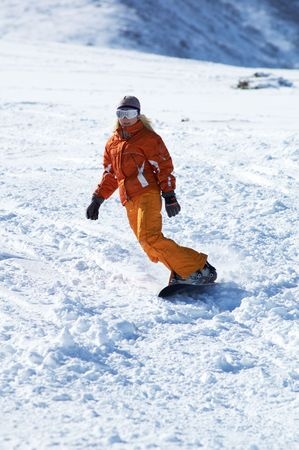
Skiing and snowboarding are just a few of the most enjoyable sports that the winter season has to offer, however, without the proper precautions, you can put yourself at serious risk. Your knees are incredibly vulnerable to injury when participating in these sports. Your sports Orthopedic Surgeon Paramus NJ at NYSMI would tell you that the most common knee injuries sustained as a result of these activities are ones to the ACL and MCL. However, you do not necessarily have to fall in order to damage your ACL. Seventy percent of all ACL injuries are non-contact and could potentially be avoided with the right precautionary steps.
How Can I Avoid Knee Injuries While Skiing or Snowboarding?
If you ski or snowboard safely, you are more likely to avoid any serious injury. Some factors to keep in mind while engaging in this activity:
- Skiing within your limits – It is important to always be in control when you are skiing or snowboarding and to not push yourself to do something that your body physically cannot. Like any other activity, it is imperative that you listen to your body. A sports Orthopedic Surgeon Paramus NJ would tell you that many patients have ignored the warning signs that their bodies gave them, leading to injury.
- Being aware of conditions – The weather can dramatically change the condition of the ski run and may be challenging for recreational skiers. Be aware of these conditions before you start skiing or snowboarding. We do not suggest skiing/snowboarding in inclement weather, especially if you’re not an expert.
- Falling correctly – Nobody is perfect and you are bound to fall eventually while hitting the slopes due to the nature of the sport. When you do inevitably take a dive, it is essential to go with the flow of the fall and “fall with grace.” The body is more likely to be injured when the body stiffens up, so keep yourself comfortable and try not to panic.
- Use the right gear – Make sure your equipment is properly fitted to you. DO NOT wear loose-fitting equipment.
- Training – Knee injuries are more common with recreational skiers because expert skiers normally have better technique. We at NYSMI, a sports Orthopedic Surgeon Paramus NJ, have seen plenty of cases where patients did not have the proper technique or their legs were not properly conditioned for skiing or snowboarding.
How Knee Injuries Occur, and How to Prevent Them
When skiing or snowboarding, you should always try to stay within your limits to decrease the risk of injury. However, even the most experienced athletes can find themselves in precarious situations. How you respond to and handle yourself in these situations can change whether you experience an injury or walk away safely. If you have suffered from a knee injury from skiing or snowboarding, reach out to us at NYSMI for a sports Orthopedic Surgeon Paramus NJ and get the help you need for recovery and care.
Often, the most common injuries in the knees from sports activities like skiing and snowboarding occur in the ACL and MCL. Injuries in these areas are more common because of the large amounts of twisting and bending forces that your knee can experience during these activities. The board or ski, combined with the stiff boots holding your legs in, can create a scenario that overloads the force in your knees and impels an injury. Some common errors or dangers that increase the risk of injury include:
- Being off-balance in the rear of your stance.
- Having your hips below the knee.
- Uphill arm back in an incorrect position.
- Upper body facing downhill ski or keeping your weight on the inside edge of the downhill ski.
If you find yourself in those situations, it is best to take the proper steps to fix your position, or even to bail out, as your risk of injury is far greater in those situations. Some ways to fix bad positioning include keeping your arms forward, feet together, and your hands over your skis. Additionally, you should maintain balance and control and keep your hips above your knees.
Local Orthopedic Surgeon in Paramus NJ
If you have injured your knee while skiing, snowboarding, or during any sport, visit a sports Orthopedic Surgeon Paramus NJ as soon as you can to avoid any further damage. If you are experiencing any pain, swelling, heat, redness, tenderness, hear any clicking or popping sounds, or if you have difficulty bending or putting weight on your knee, we encourage our patients to come to the New York Sports Medicine Institute. Our sports Orthopedic Surgeon Paramus NJ understands that every injury is different and we will be able to provide you with the proper care and rehab to get you back on the slopes as soon as possible. For more information, check out our website, or contact our NYC location at 212.861.2300.
THE IMPORTANCE OF PROPER REHABILITATION AFTER SURGERY
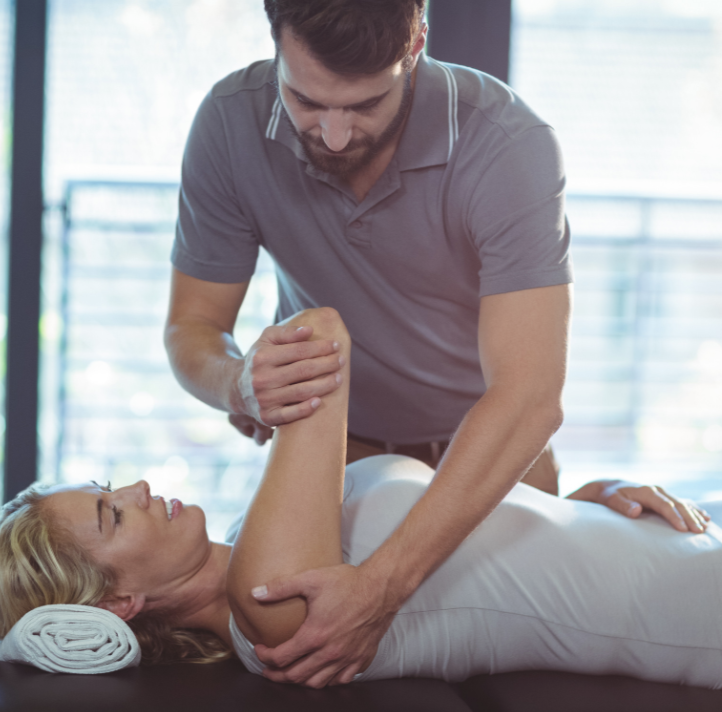
After surgery for your sports injury, our Orthopedic Surgeon Paramus NJ, Dr. Neil Roth is likely to prescribe physical therapy for you. If you do not then you are running serious risks to your body and may even make your injuries worse. Injuries resulting from lack of proper physical therapy rehab is most common after you receive surgery on the shoulder, knee, hip, elbow, foot, ankle, hand, or wrist.
These joints you get surgery on will need rehabilitation to get back in working order, and without it, you run the risk of loss of mobility and use, as well as reinjury. For an orthopedic surgeon in NYC that can help treat your injuries and provide you with the proper rehabilitation after your surgery, reach out to us at the New York Sports Medicine Institute and get the help you need!
Benefits of Proper Rehabilitation After Surgery
Our expert Orthopedic Surgeon Paramus NJ is likely to tell you that if you begin your rehab after your surgery you will:
- Restore normal movement in your injured area
- Build up strength in the surgically repaired area and surrounding muscles
- Ease any pain or swelling
- Let you go back to normal activities
- Help with circulation so you can avoid blood clots
- Help avoid re-injury
Post-rehab, or post-surgery rehabilitation, is about creating a balance of rest and exertion so you can build strength in the area you need to rebuild, while also allowing your body to heal. It can be easy to stay inactive, but this increases your risk of experiencing atrophy. At the same time, you may overexert yourself if you try to do too much after your surgery and end up hindering your healing and rehabilitation process. Your physical therapist and your orthopedic surgeon should work together to build the correct rehabilitation plan that will get you back on your feet, and let you continue your healthy life. To speak with an Orthopedic Surgeon Paramus NJ who can work with physical therapists to help build the perfect rehab plan for you, contact us at NYSMI and get back on your feet!
What Rehab or Therapy Do I Need?
It is important to start the rehabilitation process as soon as you can after surgery. Sometimes, depending on your surgery and if you are not in too much pain, you could start rehab the day of your operation. Rehab would include:
- Lightweight training exercises to strengthen the body – This will help restore normal function to the body and improve the muscles surrounding the surgically repaired area.
- Stretching the muscles and joints – Stretching will help restore your range of motion and flexibility of the muscles.
- Ice and heat application – This is important for warming and cooling the muscles. It can stimulate blood flow and decrease any swelling. If you are not sure when to apply ice or heat, consult your Orthopedic Surgeon Paramus NJ or physical therapist.
In addition to different parts of rehab, there are different types of therapies your orthopedic surgeon may prescribe to you. The different types of therapies include:
- Physical therapy- This would focus on building strength and range of motion in injured areas or joints that have been operated on. This type of therapy is the most common and often given first after surgery.
- Occupational therapy- this type of therapy focuses on performing certain tasks after your surgeries, such as walking up stairs or being able to do your own housework. You can also learn how to better modify your environment or activities to make them easier to perform and get back to living a normal life.
- Speech therapy- this therapy is more common when you have surgery on the head or neck. You may develop issues with talking, swallowing, or being able to communicate, and speech therapy focuses on what you can do to resolve and fix these issues.
There are many different types of rehabilitation processes you can use to get back to living a normal and healthy life. You should speak with your surgeon and physical therapist to learn what types of therapies you need and are right for you. To speak with an Orthopedic Surgeon Paramus NJ and figure out the best rehabilitation plan for you, reach out to us at NYSMI.
How Can an Orthopedic Surgeon Paramus NJ Help?
If you have recently received surgery, then it is important to strengthen your body to avoid any post-surgery complications. If you have had a surgery but never went through a rehab process, speak with your orthopedic surgeon about rehabilitation plans that would be right for you. At the New York Sports Medicine Institute, we understand that everyone’s surgery is different and everyone will rehab differently. Our Orthopedic Surgeon Paramus NJ is able to recommend what routine would be right for you and put you on the right path to feeling healthier than ever, and get you back to your favorite activities. For more information visit us online or call our NYC office at 212.861.2300.
TREATMENT METHODS FOR PATELLAR TENDONITIS
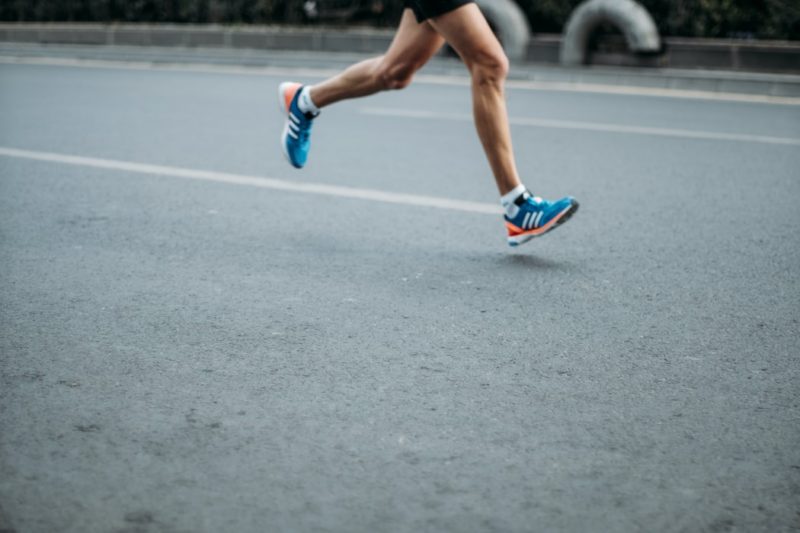
How Can Our Orthopedic Surgeon Paramus NJ Help You?
At New York Sports Medicine Institute, our team knows how devastating knee pain and injuries can be to an athlete. If you’ve recently been diagnosed with patellar tendonitis, you’ll need to work with a top team that can help with your rehabilitation and get you back to full strength. Dr. Roth, our Orthopedic Surgeon Paramus NJ, will be able to do just that. For more information on what can go into your treatment, and what can point to you having sustained this injury, continue reading.
What Is Patellar Tendonitis?
Your patellar tendon works to connect the muscles in the front of your thigh to your kneecap. These parts of the body work together to allow for movements such as kicking, running or jumping. When overuse of your knee causes your patellar tendon to become irritated and inflamed, it is known as patellar tendonitis. Many different actions can lead to irritation in this tendon taking place, but the sports that are most likely to cause this include:
- Basketball
- Volleyball
- Track and field events that involve jumping
Symptoms To Watch For
Patellar tendonitis, also known as “jumper’s knee,” needs to be taken care of right away to prevent serious damage to your knee. When care is not received quickly, surgery could be the only option to treat the issue at hand. That is why when we begin to experience any of the following symptoms, you should reach out to our Orthopedic Surgeon Paramus NJ, right away:
- Pain and inflammation around your knee
- Redness or swelling
- Feelings of discomfort that begins with physical activity or right after an intense workout
- Inability to compete due to knee pain
Risk Factors
Knowing the risk factors that can lead to patellar tendonitis can help you try to avoid this type of injury in the future. Not needing to visit with our Orthopedic Surgeon Paramus NJ, means you won’t need to stop competing. Below are just some of the risk factors our team wants you to be aware of:
- Muscular imbalances
- Tightened leg muscles
- Sudden increases in the amount of stress placed on your knees
Invasive Forms Of Treatment
After being diagnosed with patellar tendonitis, there are multiple treatment options our Orthopedic Surgeon Paramus NJ, may recommend. When the damage to your patellar tendon is severe enough, invasive intervention is sometimes the only option. Should this happen to you, below are few procedures and treatments that may be performed:
- Platelet-rich plasma injections: Dr. Roth will perform this injection for patients plagued with chronic patellar tendon problems. These injections can promote new tissue to form and help repair damage.
- Oscillating needle procedure: This outpatient procedure is a relatively new one. With the use of local anesthesia and ultrasound imaging, a small, oscillating needle will cut away the damage in your knee while sparing the tendon.
- Other Surgery: The previous procedure is not the only one that can be performed. If the damage is severe enough, Dr. Roth may recommend a surgical debridement of the patellar tendon. Doing so can eliminate your pain and get you back to full strength.
Non-Invasive Treatment
While invasive treatments can be effective, they always carry the risk of complications. To avoid this from happening, our team may utilize non-invasive forms of treatment at first to see if they will be effective. Examples of these forms of treatment include:
- Physical therapy: Physical therapy is an activity-based form of treatment that focuses on promoting healing from within the affected area. Through the use of therapeutic stretches and strengthening exercises, the irritation being experienced in your patellar tendon can be relieved.
- Knee braces: If instability has caused patellar tendonitis to take place, wearing a knee brace could correct the issue. These braces can offer the support you need and take the pressure of the patellar tendon.
- Rest and medication: Sometimes, all you’ll need is a few days worth of rest to correct your patellar tendonitis. To manage your pain during your resting period, you may be prescribed painkillers or anti-inflammatories.
Contact Our Orthopedic Surgeon Paramus NJ
Trying to live with knee pain can quickly prove to be a detriment to your everyday life. At New York Sports Medicine Institute, our team is committed to helping our patients find the relief they need. For more information on patellar tendonitis, and the treatment methods from our Orthopedic Surgeon Paramus NJ, contact us today.
RECOVERY FOR FOOT SPRAIN
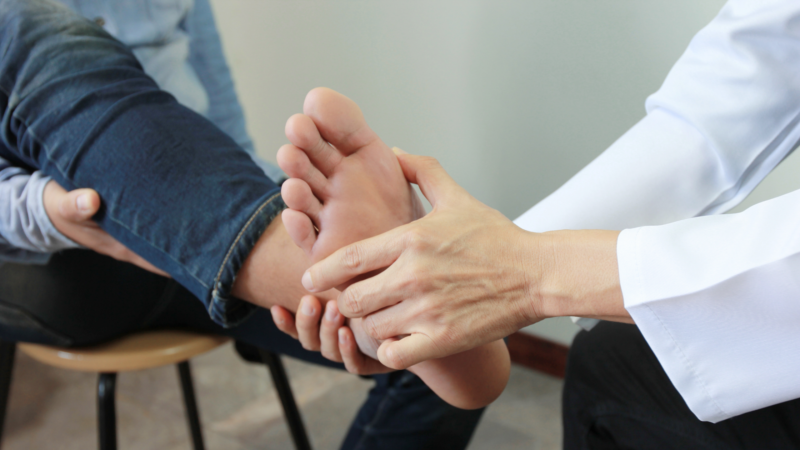
Your foot carries all the weight of your entire body with every step that you take, making your feet susceptible to more injuries and sprains. Since your foot has so many bones and joints that help make it up, that makes it a high-risk area. However, sprains of the foot are pretty rare, except in for those who participate in certain sports or occupations that subject the feet to abnormal twisting motions or bends. Foot sprains range in severity from Grade 1 to Grade 3; 1 being the least amount of pain and 3 being severe. If this sounds like something that has happened to you and you are looking for an orthopedic surgeon near 10021, then the New York Sports Medicine Institute is where you can look for doctoral advice.
Who is NYSMI?
The New York Sports Medicine Institute, orthopedic surgeon near 10021, is a full service sports medicine practice with specialties in Orthopedic Surgery, Physical Therapy and Concussion Care. The practice has locations in Manhattan and White Plains, New York. New York Sports Medicine Institute is committed to providing the highest quality of orthopedic and sports medical care. Along with the treatment of chronic pain, NYSMI strives to integrate the doctrine of prevention in all treatment plans as a way to alleviate future difficulties.
NYSMI serves patients from 3 years old to 100 years old, with treatment and surgery for orthopedic and sports injuries, to alleviate pain in the shoulder, knee, hip, and other pains, from the mild to the severe. NYSMI’s experienced and licensed physical therapists can help you to improve your mobility and your quality of life. The NYSMI team has extensive training in diagnosing and treating many conditions that limit the body’s ability to move and function in daily life, helping you get back in your regular life routine.
What is a Foot Sprain?
A foot sprain happens when you either stretch or tear the ligaments around your foot, which are the tough tissues around your foot that connect the bone to another bone. Sprains can happen during any activity, like running, falling or even hitting one of your toes against something. A sprain will often happen though when you jump or change directions too quickly. Sports that might cause this type of injury are basketball, baseball, volleyball, soccer, lacrosse, hockey and similar sports. Mostly all foot sprains will get better with treatment and over time as long as you take the necessary precautions to heal.
Treatment for Foot Sprain
There are many options for treating a foot sprain but the main thing that you really want to do is to rest. Keep off of your foot as often as you can in order to let the ligaments heal properly. Another option is to use ice as much as possible, this will help reduce swelling, inflammation, and any kind of pain that is occurring to the affected area. Another option for treatment is to use any type of compression, this will also help in the reduction of swelling and the pain that you may be experiencing. If those options are not working out for you, then it is time to seek medical attention for the area.
If it is difficult to put weight on your foot, if there is any obvious deformity of the foot or pain directly over the bone, or if you are just completely unsure of the severity of the condition. Physical therapy, chiropractor or acupuncture are also other great options for treatment in the affected areas. NYSMI will offer you all of these treatment options with ease and accessibility to make your treatment and recovery as easy as possible. They will offer you the information you need so that you will be educated in your journey back to your normal life routine.
If you are in need of care because of a serious injury or even mild sprain, then you should seek medical attention so you will have no further health issues down the road. NYSMI, orthopedic surgeon near 10021, wants to make sure that you are able to continue your everyday activities and get back to the things that you love. They want to make sure that your life is as fulfilled as it was before your injury and that you may improve on your athletic ability as a whole.


